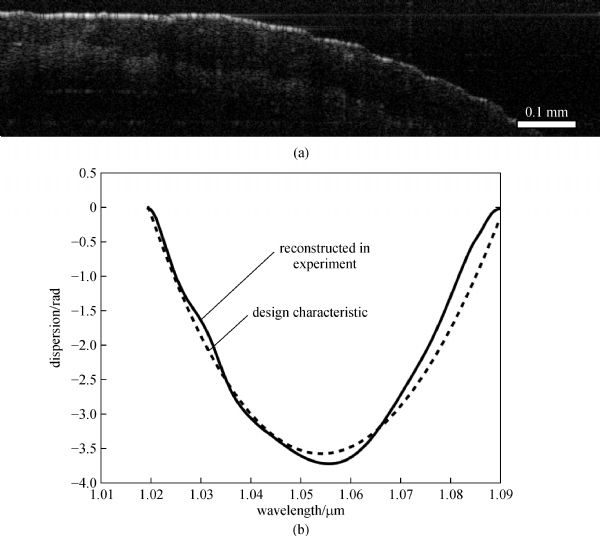Optical coherence tomography (OCT) is a technique for noninvasive visualization of the internal structure of optically turbid media, primarily biological media. OCT provides imaging at a resolution of a few micrometers, where the fundamental limitation is specified by the bandwidth of the probe radiation. Other factors influencing the axial resolution of OCT images are the dispersion of the group velocity of light determined by its optical path in the medium, the shape of the probe light spectrum, the chromatic aberration and polarization anisotropy of optical elements, etc. [
1]. OCT technology is applied mainly in ophthalmology [
2], where the method has become a gold standard. The technology enables a dramatic increase in both the diagnostic accuracy and the accessibility of human eye therapy in comparison with other methods [
3]. In addition to conventional OCT imaging, many methods to obtain concomitant information have been developed. In particular, OCT-guided technology provides an opportunity to reconstruct vascular bed images, map the elastic and polarization properties of tissue [
4], retrieve information about the thickness of individual layers of the retina [
5,
6], etc. One of the main factors significantly reducing the axial resolution of OCT images (manifested in broadening of the point-spread function (PSF) in the direction of the probe beam axis) is chromatic dispersion of the refractive index of the optical path [
7]. Despite the relevance of the problem and significant efforts of researchers toward its solution [
8−
10], no unified approach has been formulated yet that would find and compensate for image distortions caused by medium dispersion. In most cases, dispersion distortions are compensated by using hardware and software approaches sequentially. The former approach provides chromatic dispersion correction directly in the interferometer by using materials possessing dispersion properties similar to those of the media under study. This approach enables correction of the effect of primarily the quadratic terms in the polynomial expansion of the dispersion spectrum. Although it is quite sufficient for many tasks [
10], it is worth noting, following [
11], that the uncompensated effect of medium dispersion on the third decimal place of the refractive indices may result in an interference pulse delay up to 10 times longer than the pulse duration. This necessitates accurate selection of both the compensator material and its optical thickness.





